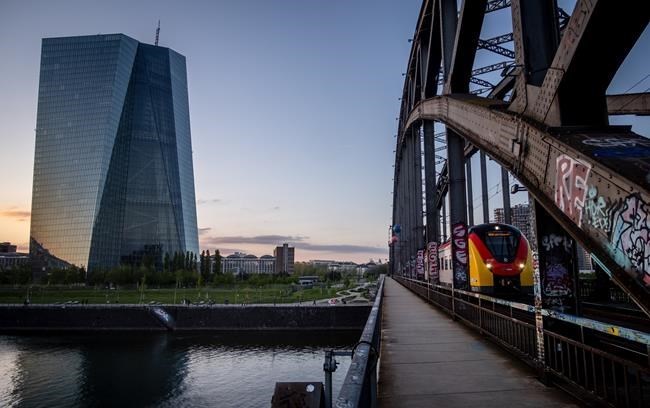FRANKFURT, Germany (AP) ŌĆö Inflation plaguing Europe rose to 2.9% in December, rebounding after seven straight monthly declines as food prices rose and support for high energy bills ended in some countries. The rise in price levels is casting doubt on predictions for speedy .
The figure released Friday was up from the recorded in November ŌĆö but is well down from the peak of 10.6% in October 2022.
ECB President Christine Lagarde warned that inflation could tick up in coming months, taking a detour from its recent downward path. The central bank for the 20 European Union countries that use the euro currency has raised its benchmark interest rate to a record-high 4% and says it will keep it there as long as necessary to push inflation down to its goal of 2% considered best for the economy.
The faster-than-expected fall in inflation over the last months of 2023 had led some analysts to predict the central bank would start cutting interest rates as early as March.
The December rebound in inflation supported analysts who are predicting that rates wouldnŌĆÖt start to come down until June.
Carsten Brzeski, chief eurozone economist at ING bank, said a jump in inflation to 3.8% from 2.3% in , ŌĆ£strengthens the stance of keeping a very steady hand and not rushing into any rate cut decisions.ŌĆØ
Officials at the U.S. Federal Reserve also stressed the importance of keep rates high until inflation is ŌĆ£clearly moving down,ŌĆØ according to released Wednesday. The Fed has signaled three rate cuts this year.
U.S. consumer prices were up from a year earlier.
Higher interest rates are the typical central bank tool against inflation. They raise the cost of borrowing for consumer purchases, particularly of houses and apartments, and for business investment in new offices and factories.
That lowers demand for goods and relieves pressure on prices ŌĆö but it also can limit growth at a time when itŌĆÖs in short supply in Europe. in the July-to-September quarter.
Inflation itself, however, has been a key challenge to economic growth because it robs consumers of purchasing power. The ECB ŌĆö like other central banks around the world ŌĆö said raising rates quickly was the best way to get it under control and avoid even more drastic measures later.
The December inflation figure was boosted by the and France that had lowered prices a year ago.
Core inflation, which excludes volatile fuel and food prices, eased to 3.4% from 3.6% in November, according to European Union statistics agency Eurostat. The figure is closely watched by the ECB.
Inflation spiked in Europe as the rebound from the COVID-19 pandemic strained supplies of parts and raw materials, then as Russia invaded Ukraine in February 2022, and energy.
Europe has since found to generate electricity, power factories and heat homes, so .
Europe ŌĆö and the rest of the world ŌĆö is facing a possibility of new delays and higher prices for consumer products as have scared away the world's largest container shipping companies and energy giant BP from .
David Mchugh, The Associated Press



